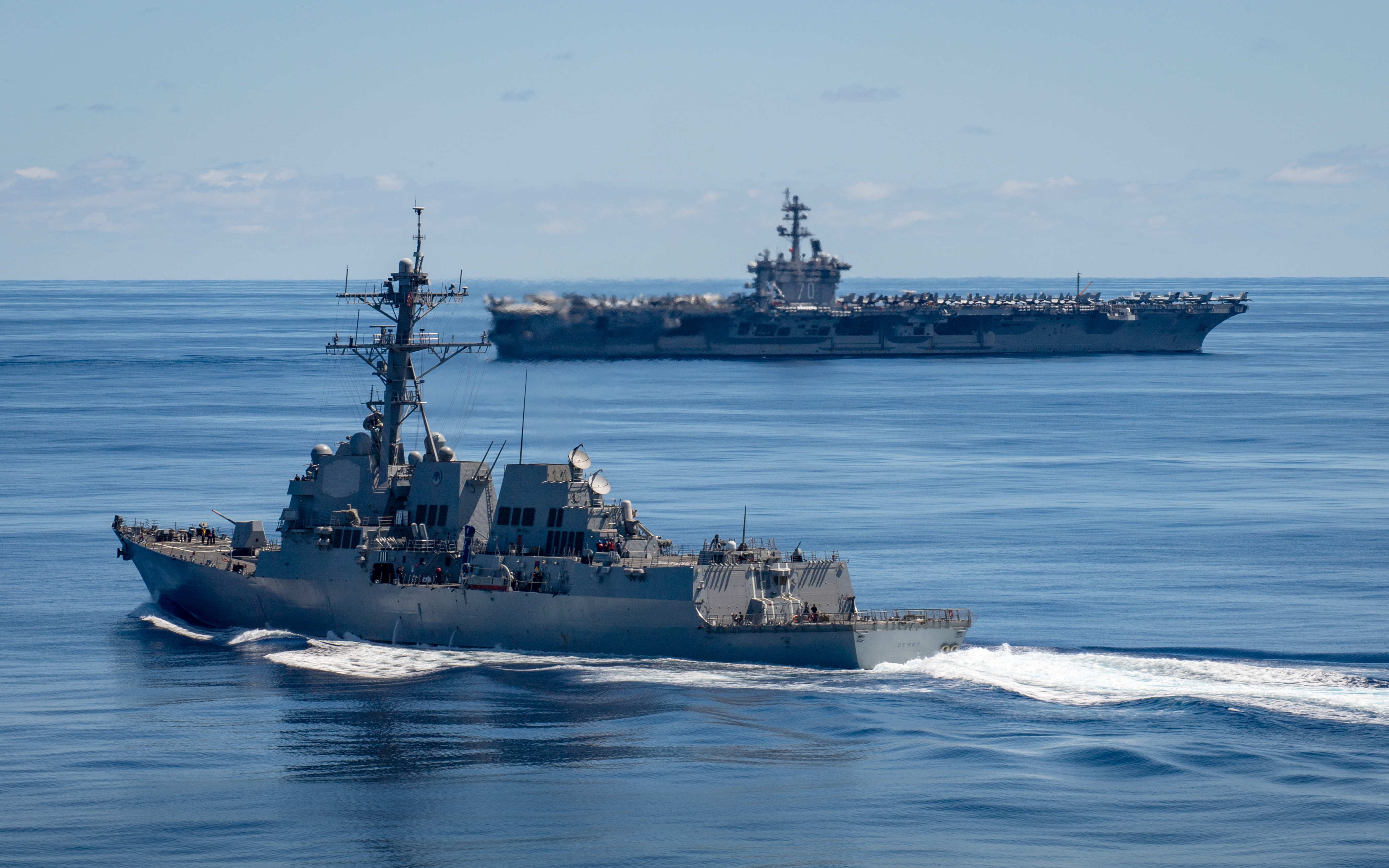
While the Marine Corps is divesting legacy systems to invest in modernization, the Navy has had to make cuts to sustain its current force, the admiral who oversees the Navy budget said today.
Rear Adm. John Gumbleton, the Navy’s deputy assistant secretary for budget, detailed the Department of the Navy’s approach to the Fiscal Year 2022 budget request, which cut an Arleigh Burke-class destroyer.
“We built the [Fiscal Year 20]22 budget, you know, noting a change in administration and the topline that the department of the navy receives, the DoN, or the Department of the Navy, built their budget with four things in mind. One . . . nuclear deterrent, number one priority – paying for the Columbia class. Number two, for the Navy and the Marine Corps, number priority for the DoN was ready to fight for tonight – that non-nuclear deterrent ready to go tonight,” Gumbleton said during a virtual appearance at the WEST 2021 conference, cohosted by the U.S. Naval Institute and AFCEA.
“Our readiness accounts had to be paid and paid upfront. The third priority speaks to getting after high leverage investments that will meet our number one competitor: China,” he said in response to a question from panel moderator former Chief of Naval Operations Adm. Jonathan Greenert. “How can we get ready for that eventuality? And then the fourth priority was to grow the size of the Department of the Navy. Clearly, the Marine Corps is divesting to invest. The Navy is actually cutting forces to sustain what we have, so we don’t have a hollow force.”
Lawmakers have criticized the Navy’s recent budget submission, which only sought one destroyer as opposed to the two anticipated under the service’s current multi-year procurement contract with General Dynamics Bath Iron Works and Ingalls Shipbuilding. The service would incur a $33 million penalty should it only buy one destroyer, USNI News previously reported.
Service officials have described the destroyer cut as a difficult choice the Navy had to make in this budget cycle due to cost. The ship appeared at the top of the Navy’s annual unfunded priorities list.
“Long story short is on the fifth and final year of the multi-year, we looked at the topline for the Navy, the investments that we wanted to make within those four priorities as stated, the multi-year penalty, as reported was a $33 million loss if we didn’t buy that ship,” Gumbleton said today. “And then the Navy looked at investments in Columbia, paying the readiness bills to fight tonight, high leverage investments in the future, and we took that $1.8 billion for a destroyer and spread it for readinesss for today, modernization for tomorrow, and investments for the future.”
When explaining the Navy’s rationale for cutting the second destroyer, Chief of Naval Operations Adm. Mike Gilday last week emphasized to Congress the importance of readiness.
“No, sir it wasn’t playing with the numbers,” Gilday told Sen. Richard Shelby (R-Ala.) when asked if the Navy no longer needed the second destroyer. “So, I go back to the thesis of our budget proposal, which is to field the best, most capable and most lethal fleet that we can – and that’s 296 ships – and make it the best that we can, including a modernization plan that gives us increased capabilities and then growing the Navy at an affordable rate. And so it was a balance across those three areas, sir.”
“Based on instances like the collisions in ’17, we are unwilling – at least my best advice, sir – is to continue to prioritize training and readiness as our top priority,” Gilday continued.
For its modernization efforts, the Marine Corps has emphasized that its approach is to cut legacy systems to invest in new equipment and strategies under the premise of flat or declining budgets. During the conference today, Lt. Gen. John Jansen, the Marine Corps’ deputy commandant for programs and resources, said the Marines have divested about $8 billion across the service in the last three budget cycles.
“If you look at [Program Objective Memorandum] ’20, POM ’21, and POM ’22, the Marine Corps has divested of end strength force structure and equipment in the amount of $8 billion, with half of that being force structure. So $4 billion worth of military personnel, approaching 12,000 Marines in end strength, in order to not only generate resources, but he’s really looking at the size of these formations, the number of formations, and so forth,” Jansen said, referring to Marine Corps commandant Gen. David Berger.
Congress is widely expected to fund and authorize the second destroyer. The House Appropriations Committee defense subcommittee in its draft of the defense spending bill unveiled on Tuesday included funding for two destroyers.





